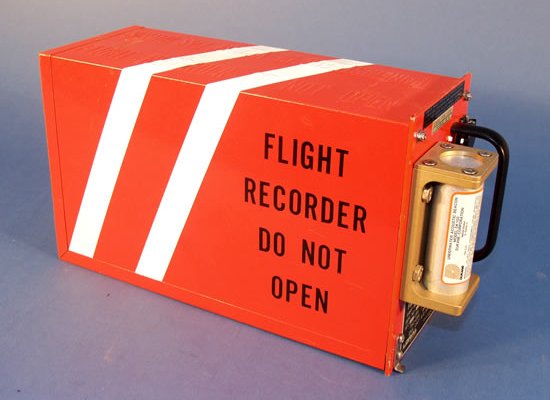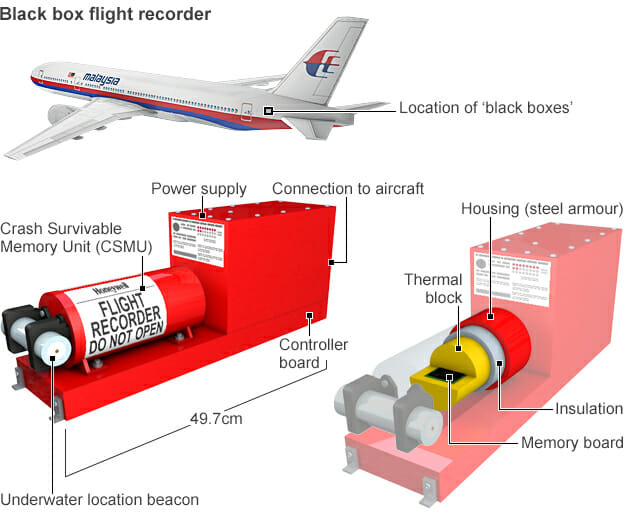Two horrific aircraft tragedies shocked the world this year – first the strange disappearance of Malaysia Airlines flight MH370 ‘over the Indian Ocean’, and the recent MH17 crash over Ukraine. It’s shocking considering flying is proven to be the world’s safest mode of transport and that plane crashes are a rarity. In an event of a rare crash, however, one crucial device gives us clues to what really entailed in the cockpit and in the cabin – the black box.
Here are some facts about the black box:
#1 It’s not black. It’s orange. So that it’s easier to spot on an accident site.
#2 There are two types of black boxes – the flight data recorder (FDR) and cockpit voice recorder (CVR).
#3 Fire retardent. Black boxes can withstand more than 1100 degrees Celsius for an hour or 260 degree smouldering fire for 10 hours.
#4 In the tail. They are usually located in the tail of the aircraft where there’s plenty of structure for better survivability in case of impact.
#5 Terabytes of data. They record for 25 hours on a continuous loop, on solid state memory drives (old black boxes use tape). After 25 hours it records over the oldest data. Can record terabytes of data in a single flight.
#6 Multiple sources. Records from multiple sources around aircraft including communication and ambient sound in the flight deck.
#7 Underwater locator beacon. Integrated with underwater locator beacon (ULB) on the front of the black box. In event of immersion in water, the beacon will send out a sonar ping. It pulses at 37.5kHz and can transmit sound as deep as 4,200m. After it starts pinging, it continues to ping once per second for 30 days.
#8 Very robust. Can withstand deceleration of 3,400G over 6.5ms. That’s like 110-0kmh in a space of 1cm.
#9 Record everything (ok, almost). Airspeed, pressure altitude, pitch, roll, yaw, and much more – even details like what seat belts are doing, temperatures in passenger and baggage compartments.
#10 Costly. Can cost from US$10,000 to US$15,000 each.
Black boxes don’t tell the whole story but they give important clues and evidence to investigators on what has entailed in an accident.
In the future, black boxes will include video capabilities although privacy concerns have put implementation on hold.
An alternative is to utilise a cloud-based system when data can be streamed to a ground-based station via satellite. These systems already exist, for example AeroMechanical Services’ FlyhtStream air-to-ground system.
Found this useful? Share this.
Sources: HowStuffWorks, Telegraph UK
Image credits: Aerospaceweb, IASA, BBC
In memory of #MH370 #MH17
Latest news
- “Unlimited” Data with Limits? Demystifying Telco Fair Usage Policies (FUP) in Malaysia
- Get Ready for 2024: The Rise of Generative AI in Cyberattacks
- Acer unveils the Predator Triton 16
- Refreshed Acer Swift Edge 16 Laptop set to shine with 3.2K OLED display
- Never miss a World Cup Qatar 2022 match with Astro Fibre
Subscribe to Vernonchan.com: Never miss a story, read stories on Feedly and Medium
Disclosure: Keep in mind that VERNONCHAN.COM may receive commissions when you click our links and make purchases. Clicking on these links cost you nothing and it helps to cover some of the costs for the upkeep of the site. While we may receive commissions, this does not impact our reviews, views and opinions which remain independent, fair, and balanced. Thank you for your support.










